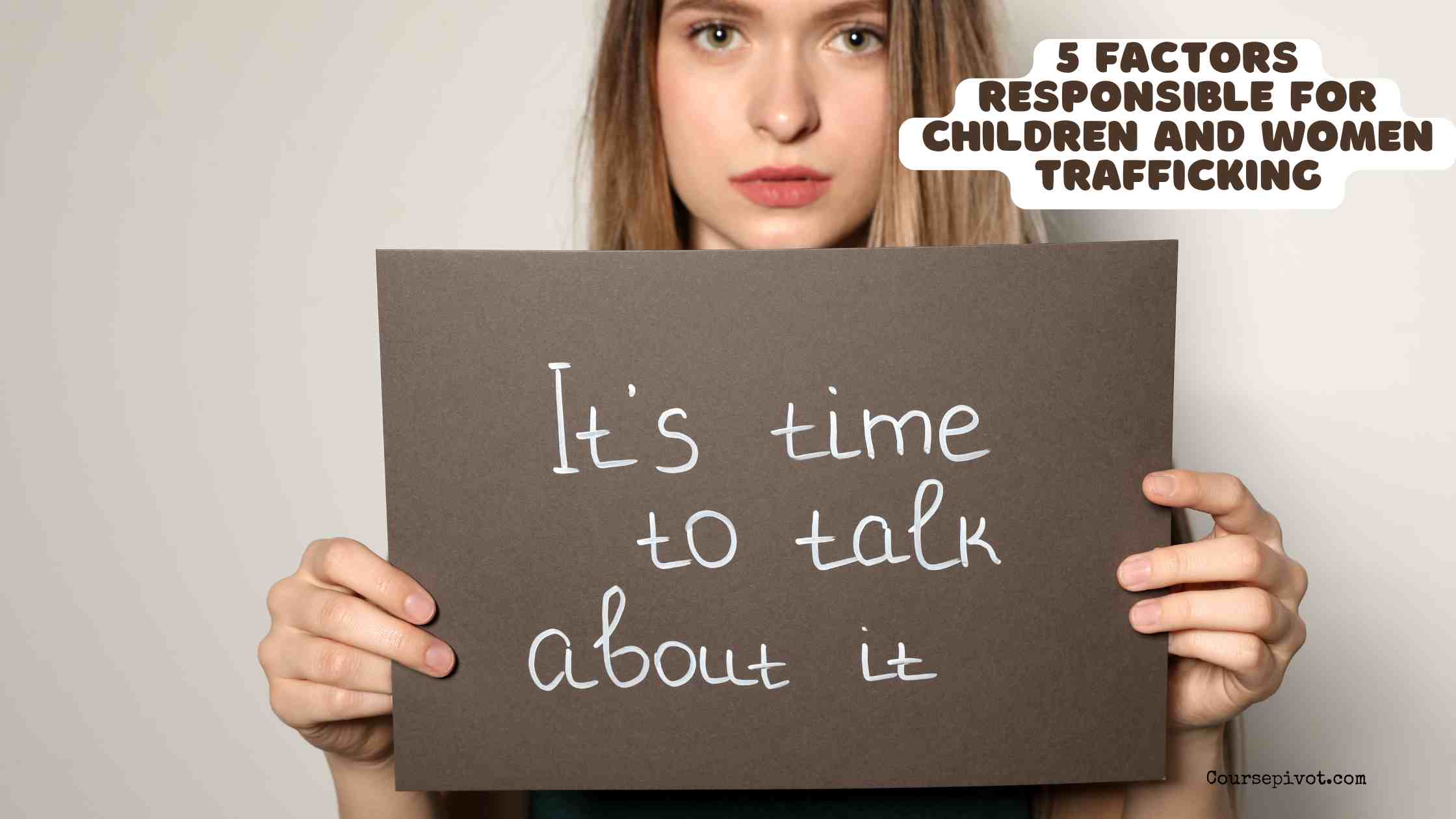
5 factors responsible for children and women trafficking
Human trafficking, particularly of children and women, is a global crisis, with the International Labour Organization estimating 25 million victims worldwide in 2024, 71% of whom are women and girls. This heinous crime thrives in shadows, fueled by systemic vulnerabilities. Understanding its root causes is crucial to dismantling the networks that exploit the most vulnerable. This blog examines five key factors responsible for children and women trafficking, shedding light on this urgent issue.
Table of Contents
Poverty and Economic Inequality
Poverty is a primary driver of human trafficking. Desperate financial conditions push families and individuals into risky situations. Economic hardship creates vulnerability. Key aspects include:
- Lack of Income: Families earning less than $2 a day, affecting 9.2% of the global population per World Bank 2024 data, may send children to work or accept dubious job offers for women.
- Unemployment: High unemployment rates, like 20% in some developing regions, force women into exploitative jobs.
- Survival Choices: Parents may unknowingly sell children to traffickers posing as recruiters, believing they’re securing better futures.
For example, in Southeast Asia, impoverished families have been lured by promises of factory jobs, only to find their daughters trapped in brothels. Poverty increases trafficking risk by 60%, per a 2023 UN report. Economic empowerment programs could reduce this vulnerability significantly.
Lack of Education and Awareness
Ignorance fuels exploitation. Limited education and awareness leave women and children unaware of trafficking risks. Knowledge is a shield. Consider these points:
- Low Literacy Rates: In regions with literacy rates below 50%, like parts of Sub-Saharan Africa, trafficking rates are 30% higher, per UNESCO data.
- No Awareness Campaigns: Communities without access to anti-trafficking education are 40% more likely to fall victim, per a 2024 IOM study.
- Child Vulnerability: Uneducated children are easily manipulated by false promises of schooling or jobs.
A case in India showed uneducated rural girls being lured to cities with fake modeling gigs, only to be trafficked. Community education programs reduce trafficking by 25%, per NGO reports. Schools and media campaigns can empower potential victims to recognize dangers.
Gender Inequality and Discrimination
Gender disparities create fertile ground for trafficking. Women and girls face systemic marginalization, making them prime targets. Inequality breeds exploitation. Key factors include:
- Patriarchal Norms: In societies where women lack rights, they’re 50% more likely to be trafficked, per a 2023 UN Women report.
- Domestic Violence: Women fleeing abusive homes are targeted, with 30% of trafficking victims citing violence as a factor, per ECPAT data.
- Limited Opportunities: Restricted access to jobs or property ownership pushes women into risky migrations.
For instance, in parts of South Asia, girls are sold into marriage or labor due to dowry pressures. Gender equality initiatives, like legal reforms, cut trafficking risks by 35%, per global studies. Empowering women through rights and opportunities is critical.
Read How Did the Issue of Slavery Affect the Debate on Representation at the Constitutional Convention?
Weak Legal Systems and Corruption
Ineffective laws and corrupt systems enable traffickers to operate with impunity. Justice gaps fuel crime. Weak enforcement creates safe havens for exploitation. Consider:
- Lax Penalties: Countries with minimal trafficking penalties see 45% higher trafficking rates, per a 2024 UNODC report.
- Corrupt Officials: Bribes allow traffickers to bypass border checks, with 20% of cases involving official complicity, per Transparency International.
- Slow Prosecutions: Only 11% of trafficking cases lead to convictions globally, per 2023 UN data.
In some African nations, traffickers bribe border guards to smuggle children unchecked. Strengthening laws and anti-corruption measures reduces trafficking by 40%, per legal studies. Robust legal frameworks and accountability are essential to deter perpetrators.
Conflict and Displacement
War and instability create chaos, making women and children easy prey. Conflict zones are trafficking hotspots. Displaced populations face heightened risks. Key points include:
- Refugee Camps: Women and children in camps are 50% more likely to be trafficked, per a 2024 UNHCR report.
- Orphaned Children: Conflicts leave children without guardians, increasing exploitation risk by 60%, per Save the Children.
- Desperate Migration: Fleeing families accept risky offers from traffickers posing as smugglers.
For example, Syrian refugee girls have been trafficked into forced marriages in neighboring countries. Humanitarian aid and secure migration pathways reduce trafficking risks by 30%, per relief agency data. Stabilizing conflict zones and protecting displaced people are vital.
Practical Steps to Combat Trafficking
Here are actionable steps to address these factors:
- Economic Support: Provide microloans or job training to at-risk communities.
- Education Campaigns: Launch school and media programs to raise trafficking awareness.
- Gender Equality: Promote women’s rights through legal reforms and education.
- Strengthen Laws: Enforce strict anti-trafficking laws with trained officials.
- Protect Displaced People: Ensure safe refugee camps and migration routes.
These steps, backed by global anti-trafficking research, can cut victimization rates by up to 50%. For instance, a Kenyan NGO’s job training program reduced local trafficking by 20% in 2024.
Why These Factors Matter
Children and women trafficking thrives on systemic failures—poverty, ignorance, inequality, weak laws, and conflict. These factors don’t just enable crime; they strip millions of dignity and safety, costing societies $150 billion annually, per ILO estimates. Addressing them protects vulnerable populations and builds a just world. Ignoring them perpetuates a cycle of exploitation.
Read How Human Health Considerations Shape Environmental Policy
Key Takeaways
Poverty, lack of education, gender inequality, weak legal systems, and conflict drive children and women trafficking. Targeted interventions—economic aid, awareness campaigns, equality reforms, stronger laws, and protection for displaced people—can dismantle these drivers. Understanding and acting on these factors is crucial to ending exploitation. Collective action ensures a safer future for the most vulnerable.
Cite this article
You can copy and paste your preferred citation format below.
Martin, L. & Arquette, E.. (2025, August 30). 5 factors responsible for children and women trafficking. Coursepivot.com. https://coursepivot.com/blog/5-factors-responsible-for-children-and-women-trafficking/



